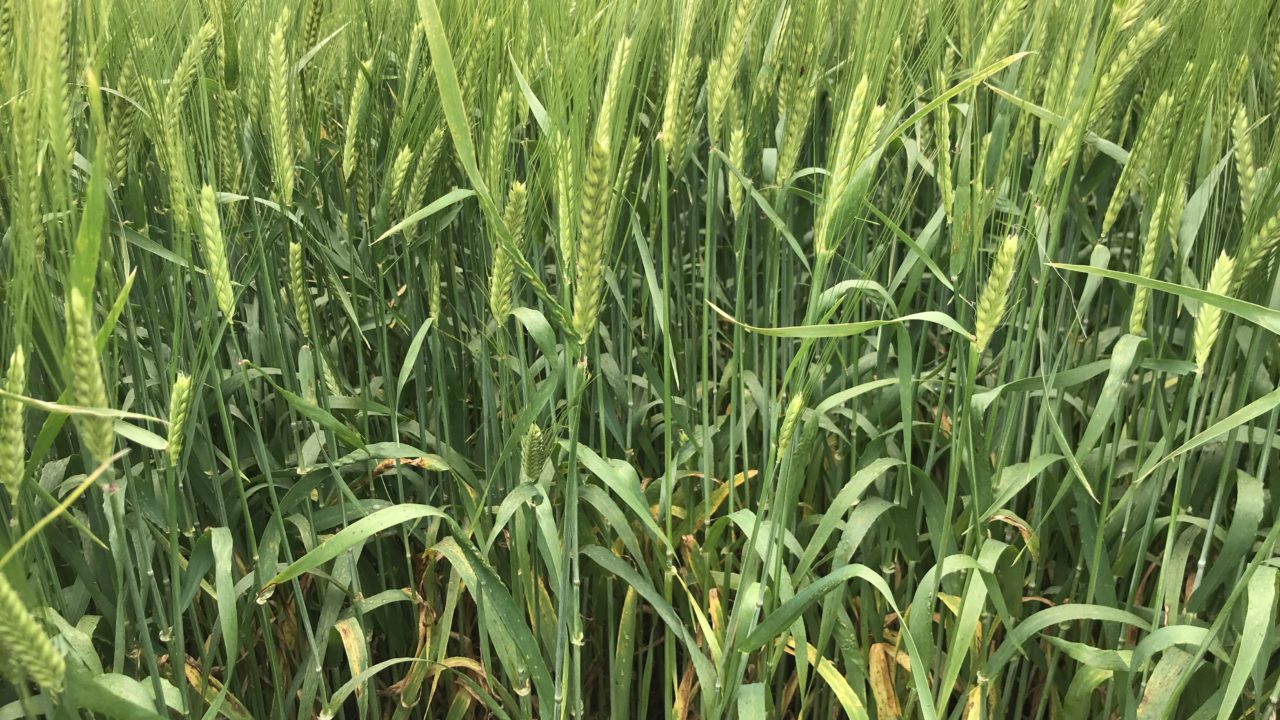College of Agriculture, Food and Rural Affairs (CAFRE) tillage advisors are confirming that most cereal crops in Northern Ireland are generally a little ahead of normal.
This is a direct result of the relatively mild spring, after a winter of good growth. However, some level of disease can be found in most winter cereals.
Growers are being advised to keep a close eye on crop development, making sure key timings of fertiliser and sprays are not missed.
Emphasis is being placed on the importance in maintaining good timings where fungicide applications are concerned; these products are more effective when applied on a preventative basis.
This means the effect of a missed timing will only be visible weeks later, by which time the fungicides curative activity is less active at controlling disease and protecting yield potential.
Applying fungicide to cereal crops
T1 sprays applied from mid-April will be due their T2 fungicide three to four weeks afterwards, ideally when the flag leaf and the first few awns have emerged.
According to CAFRE advisors, best performance comes with Prothioconazole plus a SDHI in the mix - where crops have the yield potential to justify the additional expense.
A well timed T2 fungicide gives a bigger yield response in wheat than any other spray timing. This should be applied at flag leaf emergence - no later than four weeks after the T1 spray.
CAFRE is indicating that new active ingredients from BASF and Corteva have shown to give better disease control than existing top performing SDHI/Triazole fungicides in AHDB fungicide trials.
So they may be worth the extra spend at T2 for high yield potential crops under high disease pressure.
Effectiveness of fungicides
According to CAFRE advisors, in order to maintain the longevity and efficacy of fungicides it is important to use them responsibly as part of fungicide programmes.
This minimises the risk of resistant septoria strains developing. Growers should follow on-label advice on applications per season; only use these products where necessary.
Farmers should also keep up dose rates of actives in mixes and always use these products in combination with a multi-site protectant such as Folpet.
Spring cereals in Northern Ireland were mostly sown-out in time into good seedbeds.
Where herbicide has not yet been applied, a mixture of at least two broad spectrum products should be used when most of the weeds are at the two to four leaf stages.
This approach ensures that weed competition is removed early.
Early sowing should mean good yield potential for spring cereals. Tank mixing a low rate fungicide with the herbicide will prevent the establishment of disease and protect yield potential.
Growers should apply a nitrogen (N) top dressing, once tramlines are visible at the two to three leaf stage (GS 12 to 13). Later applications than this may green the crop but add little yield.
It is important that growers inspect protein crops for grass weeds and volunteers. If necessary, apply a graminicide (grass weed herbicide) once grasses have emerged and before the crop canopy closes over.
A fungicide is recommended for beans at mid-flowering to control chocolate spot and bean rust. This can usually applied in the second half of June.

